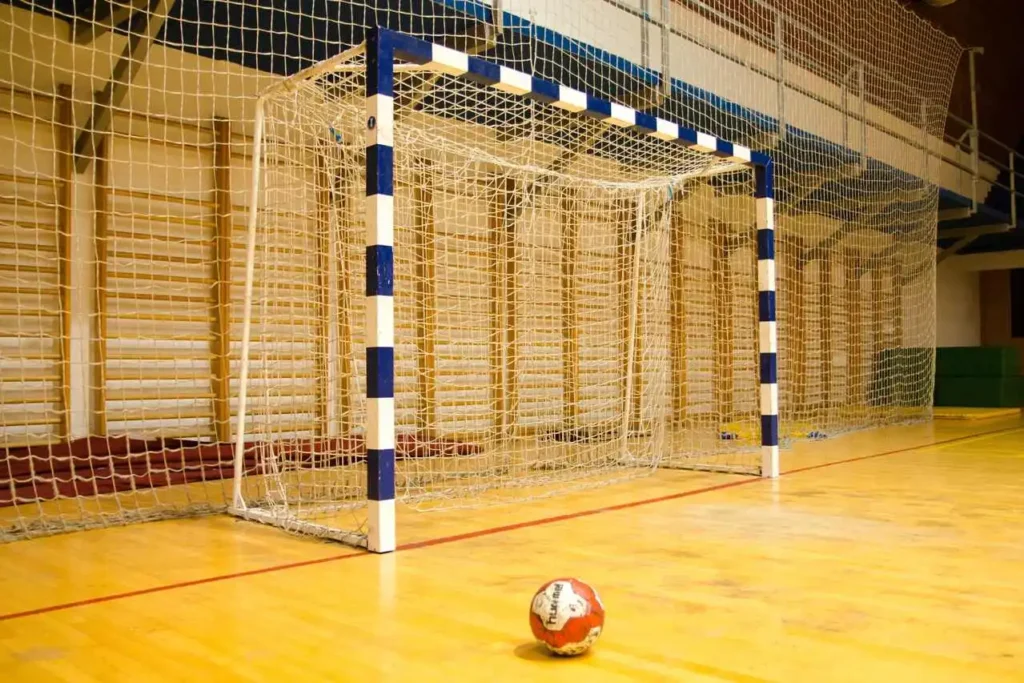Indoor Soccer vs Futsal : Discover 8 differences
While soccer fans have no problem recognizing the various off-shoots of this super popular sport, a lot of people have no idea that Futsal, Indoor soccer, Minifootball, etc, are all slightly different games. And when you add variations like 5-a-side, or 4-a-side, and street soccer/street football, it is enough to create a lot of confusion. Let’s see if we can clear up some of the misconceptions revolving around Indoor soccer and Futsal.
Here’s a quick overview of Indoor soccer vs Futsal
| Name | Futsal | Indoor Soccer |
| Governing body | FIFA | WMF |
| The field size | 125ft-138ft x 66ft- 82ft | 175ft-210ft x 75ft-100ft |
| Playing surface | Hardwood floor | Synthetic turf |
| Walls | No walls | 6ft walls |
| The ball | Smaller, low bounce ball | Normal soccer ball |
| Rules | ||
| Team | 5 player teams | 5 or 6 player teams |
| Game interval | 2 intervals of 20 min each | 4 intervals of 15 min each OR 2 intervals of 25 min each |
History of Indoor soccer and Futsal:
Nearly all versions of indoor soccer have originated out of necessity, either due to the weather, or due to lack of soccer facilities available. Countries like the US and Brazil, where soccer is hugely popular, extremely cold weather prevents outdoor games for months at a time. Instead of dropping practice for long periods during the winter, many players choose to play a game that can be played all year round.
The beginning of indoor soccer can be traced as far back as 1885 when a series of three games was played in Newark. Leagues began forming by the 1920’s and 1930’s. The first set of rules for futsal were set down by Juan Carlos Ceriani in Uruguay in 1930. Both indoor soccer and futsal developed side by side, the minor changes between them being dictated by circumstances and local preferences more than anything else.
Professionally, indoor soccer was being played as early as 1939, in matches held by the ASL (American Soccer League). By the late 1970s, it had evolved from “hoc-soc” into major leagues of indoor soccer across the US, Brazil, and Canada. (“Hoc-soc” was the name coined for it during the earlier part of the 1900s as the game was considered a mix of hockey and soccer and was often played on ice hockey rinks).
1989 saw Futsal being officially taken over by FIFA. FIFA held the first Futsal World cup in the same year. (Brazil won, in case you were wondering :)).
The governing body for Indoor soccer, on the other hand, was FIFRA (Federación Internacional de Fútbol Rápido), which evolved into the World Minifootball Federation (WMF). WMF’s official name for the game is minifootball. The first FIFRA world cup was held in 1997. Mexico won against the US.
Indoor soccer or futsal? Which one is official?
Futsal and Minifootball are the only two officially recognized versions of indoor soccer. And between the two, futsal is the only one recognized by FIFA.
Difference Between Indoor Soccer and Futsal
1. The Field
A major difference between indoor soccer and futsal is the field each is played on. Futsal is played in a smaller area. The ground is a hardwood floor, like that of a basketball court. The Indoor soccer field is slightly bigger, covered by artificial turf. You need specific shoes for playing on the indoor soccer field.


2. The Ball
Since there is no carpeting, turf, or grass, in Futsal a normal soccer ball would bounce far too much and would be much more difficult to control in an already fast-paced game, so the futsal ball is a specially sized, smaller, and less bouncy one.
Indoor soccer uses the same ball as outdoor soccer, a size 5 ball around68-70cm in circumference and weighing around 410-450 g. As a result, players need to contend with a higher bounce when playing indoors.
3. Indoor soccer vs futsal – The Rules
- Game interval: Futsal is shorter, being 40 min long. The game is played in two halves, each half of 20 min. An indoor soccer game is of 50 or 60 min, played in either 2 intervals of 25 min each or 4 intervals of 15 min each.
- Wall bouncing: There are no walls in Futsal. If the ball goes out of bounds, the team has 3 seconds to bring it back before the other team gains a kick-in. Conversely, in indoor soccer, it will only result in a simple throw-in. In indoor soccer, the ball only goes out of play if it goes over the walls.
- Stoppage: In futsal a stop clock is used. In indoor soccer a running clock is used, and there are almost no stoppages.
- Substitutions: In futsal, a player that is sent-off can only be replaced after 2 min, but in indoor soccer the substitute can join the game immediately. Both games allow substitutions on the fly.
- Fouls: The rules for fouls are almost the same as outdoor soccer for both futsal and indoor soccer. In futsal, if one of the teams commits 5 fouls in a single half of the game, the other team gets a free shot.
- Game tactics: There are some significant differences in game-play between indoor soccer and futsal. The walls are a part of the indoor soccer field. They can be used during play to bounce the ball while passing to a teammate, in offensive or defensive maneuvers. Players learn to factor in the walls and add some pretty creative moves that showcase their quick thinking and help develop their reflexes. In futsal, the smaller field and smaller team causes the play to move even more quickly. More interest is added by the fact that the ball can go out of bounds quite easily. Lightning fast decisions need to be made when that happens.
Conclusion
There are many other small rule differences that can be found between the two games, and we might do a future article diving really deep into indoor soccer vs futsal, but hopefully, most of you can now recognize and distinguish between (and properly cheer for:)) at least two soccer variants. Keep playing!
To get to know your indoor soccer game better, read about it here.
If you had fun reading about the difference between indoor soccer and futsal, please let us know in the comments!






